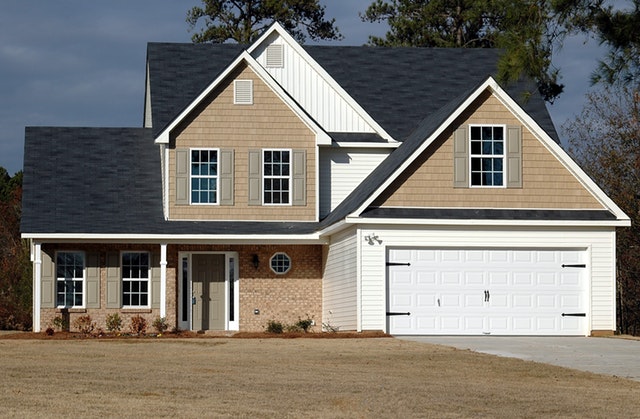What’s Ahead For Mortgage Rates This Week -February 3rd, 2020
 Last week’s economic reports included readings on home prices, new and pending home sales and a statement from the Federal Reserve’s Federal Open Market Committee. The University of Michigan issued its monthly statement on consumer sentiment and weekly reports on mortgage rates and first-time jobless claims were also released.
Last week’s economic reports included readings on home prices, new and pending home sales and a statement from the Federal Reserve’s Federal Open Market Committee. The University of Michigan issued its monthly statement on consumer sentiment and weekly reports on mortgage rates and first-time jobless claims were also released.
Case-Shiller: Home Price Growth Picks Up in November
According to Case-Shiller’s National Home Price Index for November, home prices rose by 3.50 percent on a seasonally-adjusted annual basis as compared to October’s reading of 3.20 percent. Case-Shiller’s 20-City Home Price Index showed that home prices for cities included in the Index rose 2.60 percent year-over-year. All 20 cities showed growth in home prices on a month-to-month basis.
Cities with top rates of home price growth have shifted from high-cost coastal metro areas to more moderately priced areas inland and in the South. Phoenix, Arizona reported a reading of 5.90 percent growth in home prices year-over-year and has held first place in the 20-City Home Price Index for six consecutive months.
Charlotte, North Carolina held second place with a year-over-year home price gain of 5.20 percent. Tampa, Florida reported a 5.00 percent gain in home prices and held third place in the 20-City Index.
New Home Sales dipped by 3000 sales in December to a rate of 694,000 sales on a seasonally-adjusted annual basis. December sales of new homes fell short of the expected reading of 735,000 sales according to the Census Bureau and U.S. Department of Housing and Urban Development. The seasonally-adjusted inventory of 327,000 new homes available represented a 5.70 months supply of new homes based on the current sales rate.
In related news, the National Association of Realtors® reported fewer pending home sales in December; all regions reported fewer pending sales in December as compared to November. Pending sales in the Northeast were -4.00 percent lower; pending sales in the Midwestern region fell by -3.60 percent and December’spending sales in the South and West were -5.50 percent and -5.40 percent lower respectively.
The steep drop in pending home sales was attributed to slim inventories of available homes, but fewer buyers make offers on homes during the winter holiday season. Pending sales represent homes for which purchase offers have been received but not closed.
The Federal Open Market Committee of the Federal Reserve unanimously voted to hold the Fed’s benchmark interest rate at a range of 1.50 percent to 1.75 percent. Fed Chair Jerome Powell said that current domestic economic conditions were strong, but he also noted potential unrest in global economies due to factors including the outbreak of a highly contagious Asian flu virus.
Mortgage Rates and New Jobless Claims
Freddie Mac reported lower average mortgage rates last week with the rate for 30-year fixed-rate mortgages nine basis points lower at 3.51 percent. Rates for 15-year fixed-rate mortgages averaged four basis points lower at 3.00 percent; interest rates for 5/1 adjustable rate mortgages were four basis points lower at an average of 3.24 percent. Discount points averaged 0.70 percent for fixed-rate mortgages and 0.30 percent for 5/1 adjustable rate mortgages,
Fewer first-time jobless claims were filed last week; 216,000 new claims were filed as compared to 223,000 claims filed the prior week. The University of Michigan reported that consumer sentiment rose to an index reading of 99.80; analysts expected a reading of 99.10 based on December’s reading of 99.30.
What’s Ahead
This week’s scheduled economic reports include readings on construction spending, public and private-sector job growth and the national unemployment rate. Weekly readings on mortgage rates and new jobless claims will also be released.

 Last week’s economic reports included the National Association of Home Builders Housing Market Index along with readings on consumer sentiment and weekly reports on mortgage rates and new jobless claims.
Last week’s economic reports included the National Association of Home Builders Housing Market Index along with readings on consumer sentiment and weekly reports on mortgage rates and new jobless claims. When someone is looking to purchase a house, they need to think about how long they want their mortgage to last. While a bank can structure a mortgage to last for any number of years, the most common lengths are 15 and 30 years. While a 30-year mortgage is typically more affordable, a 15-year mortgage is cheaper overall.
When someone is looking to purchase a house, they need to think about how long they want their mortgage to last. While a bank can structure a mortgage to last for any number of years, the most common lengths are 15 and 30 years. While a 30-year mortgage is typically more affordable, a 15-year mortgage is cheaper overall.